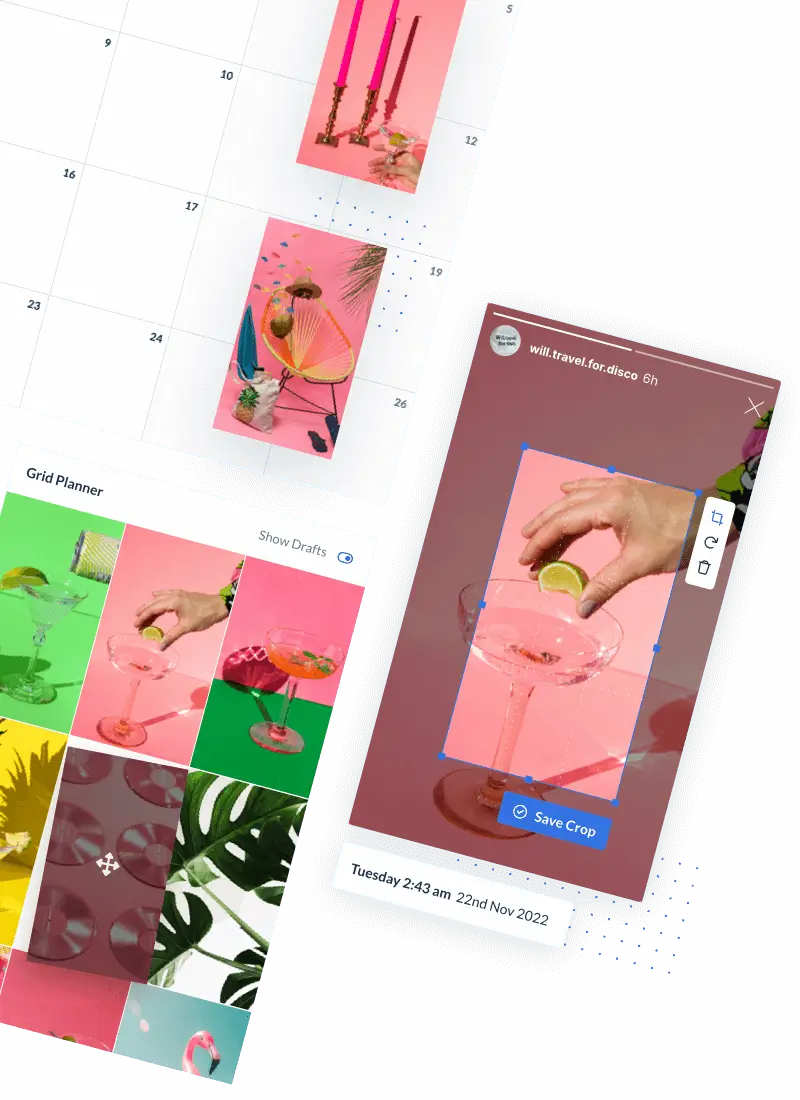The past decade has been the time of social media. Facebook, Twitter, and now Instagram have all become integral channels through which businesses engage with customers, and that’s not going to change any time soon.
In fact, it might become even more important as time goes on.
Unfortunately, many companies haven’t adapted to that change. Healthy, growing brands don’t just rely on a Facebook page anymore — they’re active on whatever platforms their customers use most often, like Instagram and YouTube.
We can trace that to one clear reason: People love videos.
Videos give more than just a snapshot into a moment. They’re a way for people to share an experience with others, to actually pull an audience into their life. Instagram, YouTube, and Twitch are hitting peak numbers, both in terms of viewers and channels. And if you aren’t using video to connect with audiences, your competitors are leaving you behind.
The good news is that there has never been a better time to start creating video content.
Here are the tips and tactics you need to tell your company’s story and build a better relationship with your customers and leads.
The Hero’s Journey
A recent trend in corporate storytelling has been a focus on viewing the customer as the hero. Traditional marketing always puts the company first — almost telling customers why they needed a specific product or service.
But a healthier mindset is to think of a company as the hero’s guide, such as Gandalf or Obi-Wan Kenobi or Dumbledore. That means reaching out to each hero/customer and helping them overcome whatever obstacles are keeping them from their goals. The company’s services and products are only tools to equip the customer/hero to succeed on their personal journey.
In this video, Ethical Coffee not only details the origins of its beans, but also cleverly explains how their business model gives customers a vote in how the business is run. In essence, it makes the customer the hero of the story.
Organizations around the world are changing their perspective as a result, and that is how we empower our customers. And this is especially true in a video format where an organization puts a face to a brand. You can become a fellow human, not just a salesperson.
In some ways, this type of storytelling is only at its peak effectiveness through a video format where emotion and personality help establish a connection.
Show, Don’t Tell
If you took any writing or English classes in college, you may have heard the phrase “Show, don’t tell.” This is something of a Golden Rule for writers, but it also applies to every type of storytelling that captures someone’s attention.
In other words, don’t bombard viewers, readers, or listeners with information. That’s the fastest way to lose someone’s interest, which means closing out of a video or deleting an email.
To avoid driving away customers, look for a way to show your topic in action — almost like you’re providing a visual context for the idea your content is focused on.
Some videos need a step-by-step process, potentially with visuals. Others might benefit from specific examples, like testimonials or case studies. And in some cases, you may just need to interview someone who can break a topic down or show how it impacts their life. All three options provide value, and that can empower viewers to take their next step and learn more.
Airbnb’s advertisement for their YouTube channel is an excellent example of showing instead of telling.
The short clip promises to share stories from hosts around the world. And since Airbnb’s product is the experience, this approach fits perfectly into their strategy.
Regardless of what you choose, your focus should be to surround your video topic with context. Make it impossible for a viewer to stay disconnected. This is a key part of what makes storytelling successful, and it’s something that comes naturally in a video format.
Include The Audience
One benefit of video marketing is that it can feel like a conversation, and conversations lead to engagement. Statistics show that putting a question at the end of a video sparks viewer responses. That’s a helpful metric for tracking your video’s success, but it’s even more valuable as a way to inform future content.
> Video, gallery & image posts
> Calendar, feed & grid preview
> Instagram, Facebook & Twitter
From that perspective, video storytelling creates an opportunity to listen to your audience and shape content around their conversations. Taking customer feedback and incorporating it into your content strategy will bring a few added benefits to your company:
- It shows that you’re listening. This is straightforward, but it goes a long way in showing people you care about their opinions and want to support their journey. (Remember, the customer is the hero!)
- It lets you call out customers. Shining a spotlight on customers gives them a sense of ownership in your company. They might not have any actual stake in things, but that emotional attachment can go a long way in establishing long-term loyalty.
- It grows your customer base. Telling your customers’ stories encourages them to share that content with their friends. This kind of organic excitement is something that every company craves, because it reaches beyond your video channel and highlights your brand as a whole.
Once you step back and think about those perks, it’s hard not to see the value of creating video content with the sole purpose of engaging your customers.
Make It Digestible
The last big challenge is finding the right way to present your content.
Your customers are constantly on the go, and that can make storytelling something of a challenge. People are less interested in reading a wall of text, especially if they’re prospective leads that are still getting to know your products and services.
So how do you cram your message into something that’s brief for the consumer but still worthwhile for your brand?
One huge benefit of video marketing is that you can fit a lot of information into a small, digestible clip. And, statistically, longer videos just don’t hold viewers’ attention.
You’ll find different benefits in written content versus video content. But as a rule, a 30-second video showing how your new product makes a routine task easier is a much more inviting piece of content than a 1,000-word blog post. Even if the article is excellent, people are interested in getting the information as quickly and clearly as possible.
And because video content isn’t bogged down with CTAs or popups, it also comes across as less of a sales pitch and more of a provided resource. (It also means traditional CTAs and popups can become part of that service rather than something to capture an email.) That can keep things customer-centric and help you tell your story in a way that feels organic and authentic.
It’s just one more checkmark on the “how videos create better engagement” list.

Drew Gula is the copywriter at Soundstripe, a company that creates cinematic music and sound effects to help businesses produce better content.










